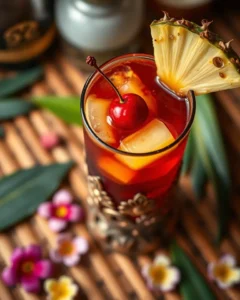The Californian Margarita is a vibrant twist on the classic cocktail, embodying the state’s sunny disposition and fresh, innovative spirit. It moves beyond the traditional tequila, lime, and orange liqueur combination, incorporating unique ingredients that create a more complex and refreshing flavor profile. This guide will walk you through how to make this elevated version of a beloved classic, perfect for any occasion from casual get-togethers to sophisticated soirees.
What Sets a Californian Margarita Apart?
The key difference between a traditional Margarita and a Californian Margarita lies in its use of falernum, a sweet syrup with notes of almond, ginger, lime, and sometimes clove. This addition gives the drink an exotic and spicy edge, setting it apart from the classic Margarita’s straightforward citrusy taste. Some recipes may also substitute lemon juice for lime, providing a slightly different, more consistent citrus note throughout the year. The use of agave syrup instead of simple syrup also enhances the tequila’s natural flavor and complements the overall profile of the cocktail. In some versions, even orange juice is added to enhance the citrus notes.
The Importance of Fresh Ingredients
As with any cocktail, the quality of ingredients significantly impacts the final taste. Freshly squeezed juice, high-quality tequila, and premium liqueurs are essential for a truly exceptional Californian Margarita. Using fresh ingredients not only improves the taste, but also elevates the entire cocktail experience, creating a richer, more nuanced drink.
The Essential Californian Margarita Recipe
Here’s a breakdown of a classic Californian Margarita recipe:
Ingredients
- 2 oz Blanco Tequila: The base of the cocktail, providing a clean, agave-forward flavor.
- ¾ oz Triple Sec or Cointreau: An orange liqueur adding citrus notes and a touch of sweetness.
- ¾ oz Freshly Squeezed Lemon Juice: For a bright and tangy flavor.
- ½ oz Falernum Liqueur: This adds a complex sweetness with ginger, almond, and lime notes.
- ¼ oz Agave Syrup: To enhance sweetness and complement the tequila.
- Pinch of Salt: To balance the flavors.
- Optional Saline Solution: A few drops can elevate the overall taste by enhancing the other flavors.
- Garnish: Lemon or lime wheel/wedge, and optional kosher salt for the rim.
- Ice: To chill and dilute the cocktail.
Step-by-Step Instructions
- Prepare the Glass: If desired, salt the rim of your cocktail glass by first running a lime or lemon wedge around the rim, then dipping it into a small plate of kosher salt.
- Combine Ingredients: In a cocktail shaker, combine the tequila, triple sec (or Cointreau), lemon juice, falernum, agave syrup, and a pinch of salt. If using saline solution add a couple of drops.
- Add Ice: Fill the shaker with ice.
- Shake Well: Shake vigorously for 20-30 seconds, until the shaker is well-chilled.
- Strain: Strain the mixture into your prepared glass filled with fresh ice.
- Garnish: Garnish with a lemon or lime wheel/wedge.
Variations on the Classic Californian Margarita
While the above recipe is a great starting point, the beauty of a Californian Margarita lies in its adaptability. Here are a few ways to personalize your drink:
Using Orange Juice
Some recipes include freshly squeezed orange juice to add another layer of citrus, creating a more complex and fruity flavor profile. You can add 1-2 oz of fresh orange juice to the base recipe above.
Tommy’s Margarita Inspired
Consider using agave nectar as the sole sweetener instead of simple syrup. This creates a less sweet margarita that truly emphasizes the tequila and fresh citrus flavors. This approach, popularised by Tommy’s Mexican Restaurant in San Francisco, is a modern classic variation.
The Spicy Californian
For those who prefer a bit of heat, consider muddling a couple of thin slices of jalapeño with the agave syrup. This provides a nice kick that complements the other flavors. You can adjust the amount of jalapeño to your preference.
Prune Juice Twist
A unique variation incorporates California Prune juice along with orange and lime juice. This adds a deep, fruity note while maintaining the cocktail’s refreshing quality. Try using 2 oz of Prune juice with 4 oz fresh orange juice.
Choosing the Right Tequila
The quality of tequila is a crucial factor in creating the perfect margarita. Many bartenders and margarita enthusiasts recommend using a good-quality blanco tequila, also known as silver or white tequila. Blanco tequila is typically unaged or aged for a short period, allowing the natural flavors of the agave plant to shine through. This provides a clean and crisp taste that pairs well with the citrusy and slightly tart elements of the drink.
Some well-regarded brands of blanco tequila for margaritas include:
- Patrón Silver: Known for its smoothness and high-quality agave flavor.
- Herradura Silver: Offers a slightly fruity and herbal profile, perfect for a craft margarita.
- El Jimador Blanco: A budget-friendly option with a solid agave flavor.
- Casa Noble Blanco: A tequila with a clean, crisp flavor.
- Don Julio: A smooth, and popular choice, known for its quality.
- Espolon: A quality option with balanced flavor.
Other tequila options for margaritas include Reposado and Añejo. Reposado tequilas are aged in oak barrels for a few months, giving them a slight oaky flavor. Añejo tequilas are aged for a year or more and have a rich, complex, and often smoky flavor. While both are delicious in margaritas, they may overpower the delicate balance of a classic margarita.
Serving and Pairing the Californian Margarita
A Californian Margarita should be served cold, typically in a cocktail glass, either on the rocks or straight up. While a salt rim is optional, it can provide a pleasant contrast to the sweet and sour flavors of the drink. A slice of lemon or lime is ideal for garnish, adding a refreshing aroma and visual appeal.
This cocktail is versatile when it comes to food pairings. The bright, tangy, and slightly spiced flavors of a Californian Margarita make it an excellent accompaniment to a variety of dishes. Some suggested pairings include:
- Ceviche: The citrus-forward margarita complements the fresh, light flavors of seafood ceviche.
- Grilled Fish Tacos: The zesty lemon and lime in the margarita pair well with the smoky, savory flavors of grilled fish tacos.
- Guacamole and Chips: The richness of guacamole is balanced by the margarita’s acidity and spicy sweetness.
- Spicy Mexican Dishes: The cocktail’s complexity can stand up to and enhance the flavors of spicy foods.
The Story Behind the Drink
The Margarita itself has a rich history, with its origins often debated between Mexico and the southern United States in the 1930s or 1940s. The Californian twist is a more recent development, driven by the state’s farm-to-table ethos and the desire for more creative, fresh cocktail options. Bartenders in California have embraced using vibrant citrus fruits and unique flavorings like falernum, creating a drink that reflects the state’s sunny, adventurous lifestyle. One popular theory credits Andrew Gelb with this twist, specifically swapping lemon juice for lime for year-round consistency and incorporating falernum for added complexity and sweetness.
Conclusion
The Californian Margarita is more than just a drink; it’s an experience that captures the essence of California’s innovative spirit and love for fresh, vibrant flavors. By using high-quality ingredients and embracing creative twists, you can craft a cocktail that is both refreshing and uniquely memorable. Whether you prefer the classic recipe or like to experiment with variations, the Californian Margarita is sure to become a favorite for any occasion.







